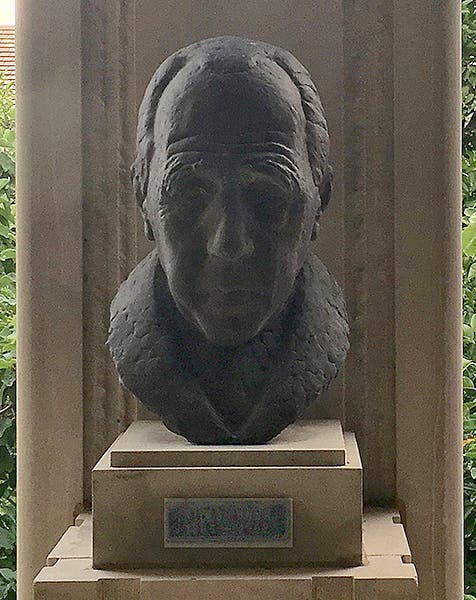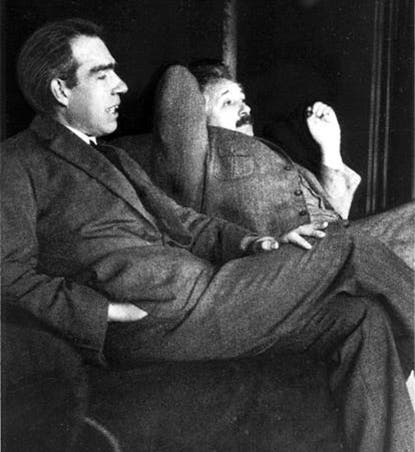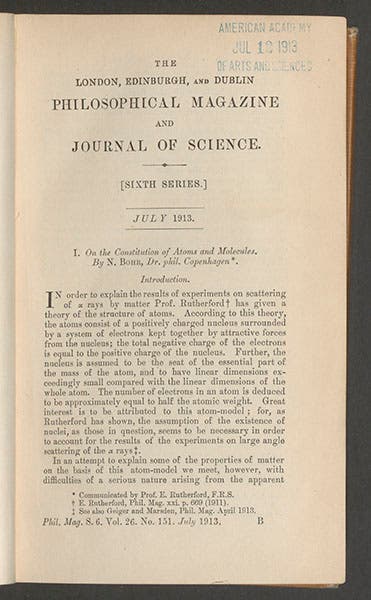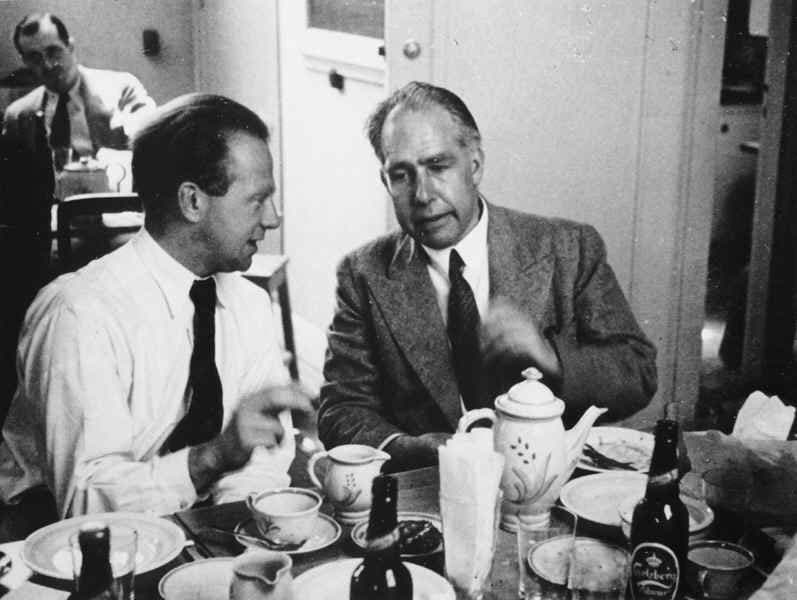Scientist of the Day - Niels Bohr
Niels Bohr, a Danish physicist, was born Oct. 7, 1885. In 1913, Bohr launched the modern era of atomic physics when he combined the quantum theory of Max Planck with the new nuclear atom of Ernest Rutherford. Planck had proposed in 1900 that energy is not continuous, but comes in little packets, called quanta, and Einstein had confirmed in 1905 that light is quantized. In 1911, Rutherford had shown that most of the mass of an atom is confined to a tiny nucleus, with the electrons whirling about like planets around the Sun. The problem with the Rutherford atom was that, according to conventional physics, the electrons should radiate away their energy in a fraction of a second and fall into the nucleus. Bohr proposed in 1913 that the energy of the electrons in an atom is quantized, so that they travel in discrete orbits, and there is a smallest orbit, containing one quantum of energy, below which the electrons cannot go. His paper appeared in the London, Edinburgh, and Dublin Philosophical Magazine, a journal that we have in the Library, and we show here the opening page (second image). It is one of the milestone papers in the history of physics, and perhaps in all of science.
An added benefit of the Bohr atom was its prediction that, as electrons move from one quantized orbit to the next, they should emit light waves at distinct frequencies, which in fact they do – the entire science of spectroscopy was based on this fact, except that, before Bohr, no one knew why this was so. The photograph of Bohr and his new wife Margrethe was taken just after his paper was published, when Bohr was still in Manchester (third image).
Bohr went on to a long and distinguished career as physicist and administrator. In 1919, the Institute for Theoretical Physics was established in Copenhagen, with Bohr as its first director. Soon it became known as the Bohr Institute (now its official name), and every up-and-coming quantum physicist studied there are some point, including Werner Heisenberg, Wolfgang Pauli, and George Gamow. One of the spin-offs of Bohr’s fame and reputation is that he was one of the most photographed of all physicists, except perhaps Einstein. We show several of those photographs here.
Our library, in addition to housing nearly all of Bohr’s publications, also owns a heroic bust of Bohr. It was sculpted in 1955 by Kurt Harald Isenstein, a German artist who fled his homeland in 1934 and took up life-long residence in Copenhagen. We acquired our bust in 1963, and it sits on the balcony outside the main reading room (sixth image).

Bust of Niels Bohr, sculpted by Kurt Harald Isenstein, 1955, on the balcony of the Linda Hall Library (Linda Hall Library)
Dr. William B. Ashworth, Jr., Consultant for the History of Science, Linda Hall Library and Associate Professor, Department of History, University of Missouri-Kansas City. Comments or corrections are welcome; please direct to ashworthw@umkc.edu.










